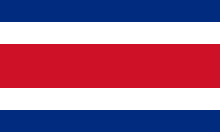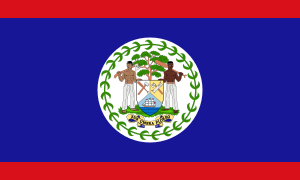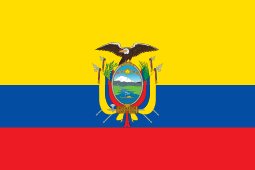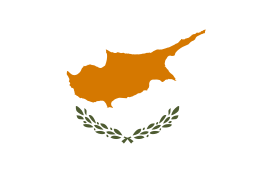Environmental Performance Index
The Environmental Performance Index (EPI) is a method of quantifying and numerically marking the environmental performance of a state's policies. This index was developed from the Pilot Environmental Performance Index, first published in 2002, and designed to supplement the environmental targets set forth in the United Nations Millennium Development Goals.[1]
.png)
The EPI was preceded by the Environmental Sustainability Index (ESI), published between 1999 and 2005. Both indices were developed by Yale University (Yale Center for Environmental Law and Policy) and Columbia University (Center for International Earth Science Information Network) in collaboration with the World Economic Forum and the Joint Research Centre of the European Commission. The ESI was developed to evaluate environmental sustainability relative to the paths of other countries. Due to a shift in focus by the teams developing the ESI, the EPI uses outcome-oriented indicators, then working as a benchmark index that can be more easily used by policy makers, environmental scientists, advocates and the general public.[2] Other leading indices like the Global Green Economy Index (GGEI)[3] provide an integrated measure of the environmental, social and economic dynamics of national economies. The GGEI utilizes EPI data for the environmental dimension of the index while also providing a performance assessment of efficiency sectors (e.g. transport, buildings, energy), investment, green innovation and national leadership around climate change.
In January 2012 four EPI reports have been released — the Pilot 2006 Environmental Performance Index,[4] and the 2008, 2010, and 2012 Environmental Performance Index.[5][6] For the 2012 report, a new "Pilot Trend EPI" was developed to rank countries based on the environmental performance changes occurred during the last decade, allowing to establish which countries are improving and which are declining.[7]
In the 2014 EPI ranking, the top five countries were Switzerland, Luxembourg, Australia, Singapore, and the Czech Republic. The bottom five countries in 2014 were Somalia, Mali, Haiti, Lesotho, and Afghanistan. The United Kingdom was ranked in 12th place, Japan 26th place, the United States 33rd, Brazil 77th, China 118th, and India came in 155th.[8] The top five countries based on their 2012 Pilot Trend EPI were Estonia, Kuwait, El Salvador, Namibia and Congo.[9]
Methodology
EPI calculation variables change often as can be seen below. This should be taken into account when observing country performance through several reports, as it can lead to score and ranking changes founded just on methodology modification.
2018 variables
Are largely similar to those from 2016, but have changed in details and some weights. Notably environmental Health is now weighted at 40% and Ecosystem Vitality at 60%.[10]
2016 variables[11]
| EPI | Objective | Issue Category | Indicator |
|---|---|---|---|
| Environmental Performance Index (EPI) | Environmental health (40%) | Health Impacts (33%) | Environmental Risk Exposure (100%) |
| Air quality (33%) | Household Air Quality (30%) | ||
| Air pollution - Average Exposure to PM2.5 (30%) | |||
| Air pollution - PM2.5 Exceedance (30%) | |||
| Air pollution - Average Exposure to NO2 (10%) | |||
| Water and sanitation (33%) | Unsafe Sanitation (50%) | ||
| Drinking Water Quality (50%) | |||
| Ecosystem vitality (60%) | Water resources (25%) | Wastewater treatment (100%) | |
| Agriculture (10%) | Nitrogen use efficiency (75%) | ||
| Nitrogen balance (25%) | |||
| Forests (10%) | Change in forest cover (100%) | ||
| Fisheries (5%) | Fish stocks (100%) | ||
| Biodiversity and habitat (25%) | Terrestrial Protected Areas (National Biome Weights) (20%) | ||
| Terrestrial protected areas (Global Biome Weights) (20%) | |||
| Marine protected areas (20%) | |||
| Species protection (National) (20%) | |||
| Species protection (Global) (20%) | |||
| Climate and energy (25%) | Trend in carbon intensity (75%) | ||
| Trend in CO2 emissions per kWh (25%) |
2010 variables
Extended content | ||||||||||||||||||||||||||||||||||||||||||||||||||||||||||||||||||||||||||||||||||||||||
|---|---|---|---|---|---|---|---|---|---|---|---|---|---|---|---|---|---|---|---|---|---|---|---|---|---|---|---|---|---|---|---|---|---|---|---|---|---|---|---|---|---|---|---|---|---|---|---|---|---|---|---|---|---|---|---|---|---|---|---|---|---|---|---|---|---|---|---|---|---|---|---|---|---|---|---|---|---|---|---|---|---|---|---|---|---|---|---|---|
|
EPI scores
2018
| Rank | Country | EPI score | Environmental Health (40% weight) |
Ecosystem Vitality (60% weight) |
|---|---|---|---|---|
| 1 | 87.42 | 93.57 | 83.32 | |
| 2 | 83.95 | 95.71 | 76.11 | |
| 3 | 81.60 | 98.20 | 70.53 | |
| 4 | 80.90 | 93.80 | 72.30 | |
| 5 | 80.51 | 94.41 | 71.24 | |
| 6 | 79.89 | 96.03 | 69.13 | |
| 7 | 79.12 | 95.07 | 68.48 | |
| 8 | 78.97 | 86.38 | 74.03 | |
| 9 | 78.77 | 95.92 | 67.34 | |
| 10 | 78.64 | 99.35 | 64.83 | |
| 11 | 78.57 | 98.41 | 65.34 | |
| 12 | 78.39 | 94.21 | 67.85 | |
| 13 | 78.37 | 88.68 | 71.50 | |
| 14 | 77.49 | 97.86 | 63.91 | |
| 15 | 77.38 | 89.37 | 69.39 | |
| 16 | 76.96 | 85.88 | 71.02 | |
| 17 | 75.96 | 95.96 | 62.63 | |
| 18 | 75.46 | 92.26 | 64.25 | |
| 19 | 75.01 | 94.14 | 62.25 | |
| 20 | 74.69 | 92.99 | 62.48 | |
| 21 | 74.12 | 97.95 | 58.23 | |
| 22 | 73.60 | 91.03 | 61.98 | |
| 23 | 72.84 | 69.85 | 74.83 | |
| 24 | 72.60 | 87.96 | 62.37 | |
| 25 | 72.18 | 97.51 | 55.29 | |
| 26 | 71.91 | 90.47 | 59.53 | |
| 27 | 71.19 | 93.91 | 56.04 | |
| 28 | 70.60 | 63.87 | 75.08 | |
| 29 | 69.33 | 72.57 | 67.18 | |
| 30 | 67.85 | 69.60 | 66.68 |
2016
On 23 January 2016, the 2016 Environmental Performance Index was released at the World Economic Forum, with 180 countries being ranked.[12]
Top 30 countries and score












.svg.png)











.svg.png)





2014
On 25 January 2014 Yale University and Columbia University released the 2014 Environmental Performance Index at the World Economic Forum ranking 178 countries.[8]
Top 30 countries and score


.svg.png)




















.svg.png)






2012
On 25 January 2012 Yale University and Columbia University released the 2012 Environmental Performance Index at the World Economic Forum ranking 132 countries.[6]
Top 30 countries and score[6]























.svg.png)






|
Top 10 countries by Trend EPI[6][7] The EPI rank is shown in parentheses.
|
Worst 10 countries by Trend EPI[6][7] The EPI rank is shown in parentheses.
|
2010
On 28 January 2010 Yale University and Columbia University released the 2010 Environmental Performance Index at the World Economic Forum ranking 163 countries.[5] The top performer for 2010 is Iceland due to its high scores on environmental public health, gets virtually all of its power from renewable sources (hydropower and geothermal energy), and its control of greenhouse gas emissions. The United States fell to the 61st position, as compared to 39th in the 2008 EPI, Brazil ranks 62nd, Russia 69th, China 121st, and India ranks 123rd.[5][13]
Top 30 countries and score[5]






























2008
On 23 January 2008 Yale University and Columbia University released the 2008 Environmental Performance Index at the World Economic Forum ranking 149 countries. The environmental experts at both universities concluded that "analysis of the drivers underlying the 2008 rankings suggests that wealth is a major determinant of environmental success".[14]
Top 30 countries and score[15]











.svg.png)


















2006
On 26 January 2006 Yale (YCELP) and Columbia University (CIESIN) released the Pilot 2006 Environmental Performance Index at the World Economic Forum ranking 133 countries. It was done in collaboration with the World Economic Forum and the Joint Research Centre of the European Commission.
Top 30 countries and score[16]







.svg.png)











.svg.png)










See also
- Environmental Vulnerability Index (EVI)
- Green Stickered Energy Consumption Indexes
References
- Yale Center for Environmental Law & Policy, and Center for International Earth Science Information Network at Columbia University. "Environmental Performance Index". Retrieved 2008-03-16.
- Yale Center for Environmental Law & Policy / Center for International Earth Science Information Network at Columbia University. "2008 Environmental Performance Index Report" (PDF). Archived from the original (PDF) on 2008-04-09. Retrieved 2008-03-18. See Executive Summary, pp. 32-35 for a detailed comparison between the ESI 2005, the EPI 2006 and the EPI 2008.
- "2016 Global Green Economy Index (GGEI)" (PDF).
- Yale Center for Environmental Law & Policy / Center for International Earth Science Information Network at Columbia University. "Pilot 2006 Environmental Performance Index Main Report" (PDF). p. 33. Archived from the original (PDF) on 2007-01-05. Retrieved 2007-06-17.
- Yale Center for Environmental Law & Policy / Center for International Earth Science Information Network at Columbia University. "2012 Environmental Performance Index". Archived from the original on 2010-02-04. Retrieved 2010-01-27. See also official Press release
- Yale Center for Environmental Law & Policy / Center for International Earth Science Information Network at Columbia University. "2010 EPI Rankings". Archived from the original on 2012-05-05. Retrieved 2012-01-25.
- Yale Center for Environmental Law & Policy / Center for International Earth Science Information Network at Columbia University. "EPI 2012: Summary for Policymakers" (PDF). EPI Yales. Archived from the original (PDF) on 2016-12-30. Retrieved 2012-01-27.
- "Country Rankings". Yale. 25 January 2014. Archived from the original on 29 January 2014. Retrieved 2014-01-29.
- Yale Center for Environmental Law & Policy / Center for International Earth Science Information Network at Columbia University. "EPI 2014: Summary for Policymakers" (PDF). EPI Yales. Retrieved 2014-12-02.
- "EPI 2018 variables".
- "2016 EPI Raw Data". Yale University. 2016.
- "2016 EPI FULL REPORT" (PDF). Yale. Archived from the original (PDF) on 2017-10-04. Retrieved May 20, 2017.
- Elizabeth Rosenthal (2010-01-27). "Iceland Leads Environmental Index as U.S. Falls". The New York Times. Retrieved 2010-01-28.
- Yale Center for Environmental Law & Policy / Center for International Earth Science Information Network at Columbia University. "Switzerland Tops 2008 Environmental Scorecard at World Economic Forum". Archived from the original on 2008-02-03. Retrieved 2008-01-26.
- Yale Center for Environmental Law & Policy / Center for International Earth Science Information Network at Columbia University. "Environmental Performance Index 2008". Archived from the original on 2010-02-25. Retrieved 2010-01-28.
- Yale Center for Environmental Law & Policy / Center for International Earth Science Information Network at Columbia University. "Pilot 2006 Environmental Performance Index". Archived from the original on 2007-06-17. Retrieved 2007-06-17.
External links
- Yale University – EPI – A collaboration between Yale and Columbia Universities
- Yale University – YCELP – Yale Center for Environmental Law & Policy
- 2018 Environmental Performance Index